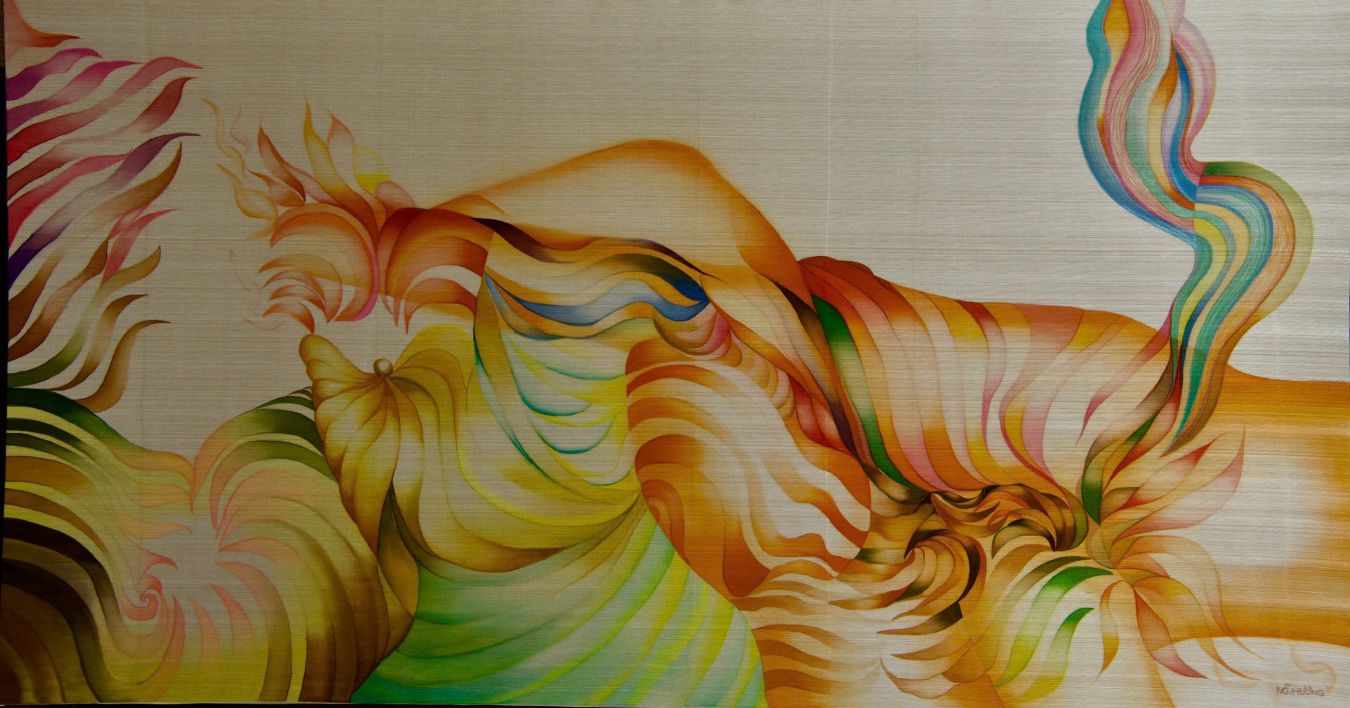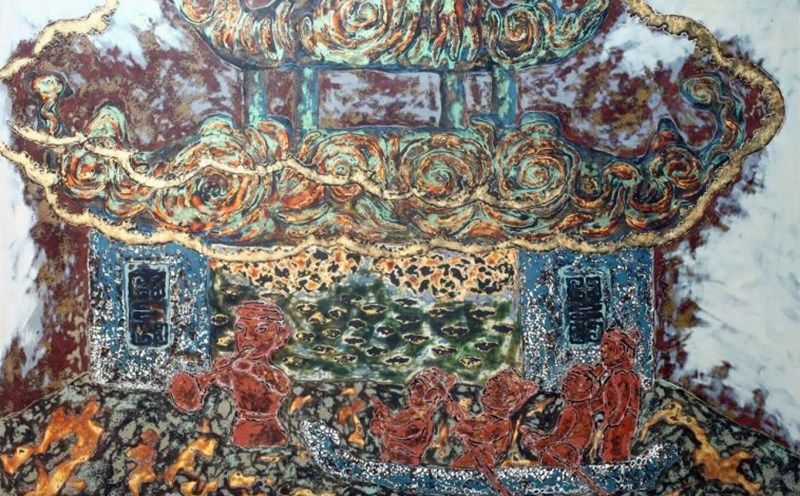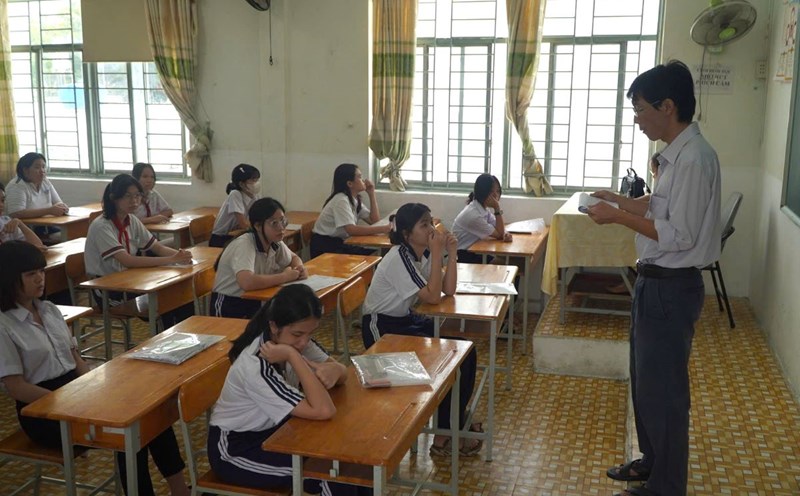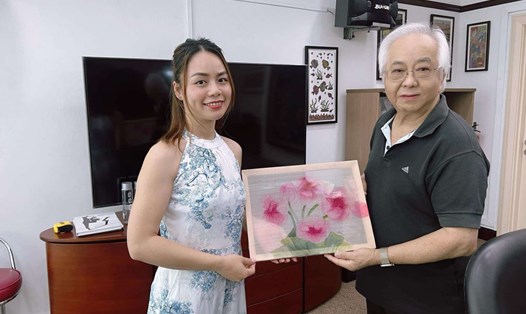An interesting thing is that the exhibitions are always associated with the names of female painters, from "Hung's silk", "Hung His", "Huong" to "Huong of Silk". In this exhibition, in addition to silk paintings, there are also sketches and a book of the same name.
Huong's writing circuit has a connection with the image of a woman in a pristine state, but if the first exhibition of the female artist uses a lot of neutral colors in terms of cold grams, the exhibitions later she added warm grams, increasing the color of the color, making the picture feel stronger. Character personality (also the personality of the artist) is increasingly visible with more desires and intense.
The " Waves", "Suoi", "Dream", "Paradise Garden"... were xooling as if they had not returned for a second time. There is no such thing as skepticism as she revealed: "I always doubt and doubt myself in the process of making art... wonder because I can't say all the things we feel..." The paintings are not underwater or underwater waves rolling down the bottom, but waves that have risen, carrying fire.

The reason for saying this is because Huong's paintings are very clear: Clear lines, clear pieces, clear patterns. But the way they combine together, overlap, the clarity creates another layer of expression: That is multi- nghiaal. That the patterns covering the bare body are not just patterns but also the silk scarves that have been patterned. That is, there is no "intention to hide" here, no half-close, half-open, half-covering, half-reporting.
Multipanity sometimes makes us feel these images like a melan, but it is because we feel them, not because there is no way out. The bodies, shoulders, back, arms, feet... are often wordless instructions, "signs" for us to explore. Not going below the depths, but on the floating layers of clouds, in a realm.
Painter Nguyen Thu Huong once said: All of your paintings are serious, this must still be true to this day. Whether it is a heart attack or a dream, the desire to "elevate", to be enrapted, to confidently express yourself in both art and real life is always what she aims for. And perhaps not just her, it is also the desire of many women.
The face that looks like a cut of a flower or fruit that the characters are revealing may just be a mask, not a real face. Huong's costume festival is still bustling and bustling, not inviting viewers but has attraction that makes people curious and want to explore.
Viewers wonder where this " case of the spell" comes from, and what it has to do with the lines the artist uses. In Huong's paintings, the patches and features are sometimes different, sometimes not. Sometimes the features are also patches (large enough like a small patch), especially when they are sharpened at both ends.

That is, they must have a common point at the root, and the ends that radiate are not floating but wrapped around, to cling to a body, a cloud, or even an air mass. The fierceness, pain, and determination that we see - may also be partly due to this way of expression.
Many people talk about femininity in Thu Huong's paintings, but if it attaches it to gentle, soft, vague adjectives like people have a sense of silk material, it may be a wrong thing. You just try to look closely at the silk when you have drawn color, although the woven fibers - but with the naked eye, we can see the gap between them, seeing the light through the light, but strange instead of their colors is still "retained" in the place where the silk thread is open. The silk can look thin but not fragile, the tension of each thread on the wooden frame is very supple and firm. Huong's silk painting, as well as Huong, is closer to this.
Huong has a habit of keeping color pallets and palm trees clean, and her silk is also clean thanks to controlling the lack of fat. When the pineapples are in a dry state, we do not feel like they are pineapples for painting but are pineapples for makeup. When dipping each one in color, squeezing the water and drawing, their shape is like sparkling sparkles. Maybe Huong painted her characters, or her own, with each of those "swanks". A lot of fire broke out in the painting.
The exhibition "Scent of Silk" takes place from May 11 to June 11, 2025 at Eight Gallery, 357/2 Nguyen Trong Tuyen, Ward 1, Tan Binh District, Ho Chi Minh City. Along with the exhibition, the 146-page book "The Huong of Silk" compiled by collector Tran Hau Tuan, Hong Duc Publishing House was also released to the public.











